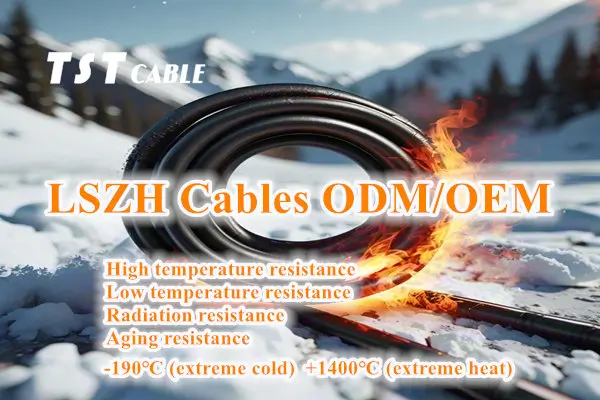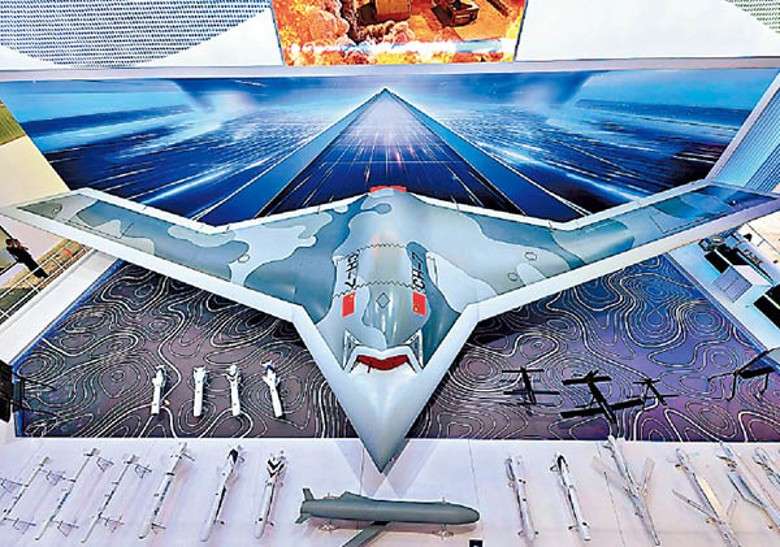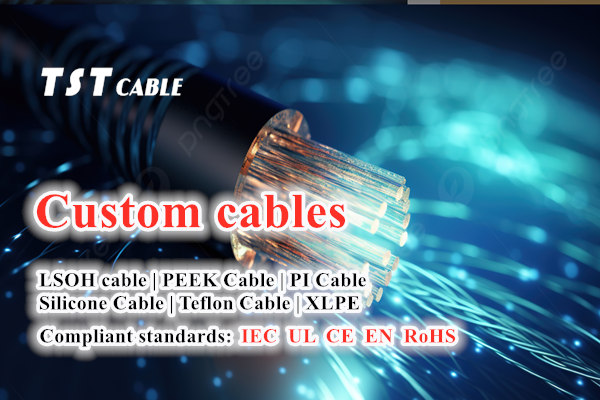
Subway fireproof soft cable is a cable designed to meet the special requirements of the subway environment, especially in terms of fire safety. Such cables usually need to meet strict safety standards and performance requirements to ensure that they can continue to work for a period of time when a fire occurs, thereby ensuring the operation of key systems such as emergency lighting, evacuation instructions, and fire-fighting equipment.
The characteristics of subway fireproof soft cables include but are not limited to the following:
- Flame retardant: The cable material is not easy to burn and can prevent the spread of flames.
- Fire resistance: Even under flame conditions, the cable can maintain the integrity of the circuit to ensure that power or signal transmission is not interrupted.
- Low smoke zero halogen (LSZH): less smoke is generated in a fire and does not contain halogen, reducing harm to the human body and corrosion to electronic equipment.
- Anti-rat and ant: Especially in the humid areas of the south, the cable must also have functions such as anti-termite and anti-rat bite.
- Environmental protection: Cable materials should be environmentally friendly as much as possible to reduce the impact on the environment.
Specifically, flexible fireproof cables (also known as inorganic mineral insulated cables) are suitable for complex wiring needs inside buildings due to their good flexibility and easy installation. These cables are mainly composed of copper conductors, inorganic mineral insulation materials and copper sheaths, and can maintain normal functions under high temperature and even direct flame conditions without releasing harmful gases or smoke.
For subway projects, flexible fireproof cables such as BTTW, YTTW, YTTWG, etc. may be used. These cables not only have the above characteristics, but are also particularly suitable for occasions that require high reliability, such as subway platforms, tunnel sections, etc. They can provide reliable power supply and ensure safety in emergency situations.
Importance in practical applications and how to choose the right cable.
Importance in practical applications
- Ensure life safety: In the event of a fire, it can ensure the normal operation of emergency lighting, evacuation indication systems and fire-fighting equipment, provide passengers with clear escape route guidance, and support fire-fighting operations.
- Reduce property losses: By limiting the speed of fire spread, reduce the degree of damage to subway vehicles, track facilities and other infrastructure.
- Maintaining operational continuity: Even in the face of small-scale fire accidents, critical systems can still maintain operation, which helps to quickly restore normal services.
How to choose the right cable
The following factors should be considered when selecting subway fire-resistant flexible cables:
Environmental adaptability: Considering the possible adverse conditions such as humidity and vibration in the subway environment, the cable needs to have good weather resistance and mechanical strength.
Electrical performance: Select the appropriate conductor cross-section size according to the specific application scenario to meet the requirements of current carrying capacity and voltage drop.
Certification standards: Ensure that the selected cable complies with relevant national or international fire safety specifications and standards (such as GB 50217 “Design Specifications for Power Engineering Cables”).
Economic cost: On the basis of meeting all the above requirements, the cost-effectiveness of the cable should also be comprehensively considered to find the most cost-effective solution.
Subway fire-resistant flexible cables are an indispensable part of ensuring the safety of underground public transportation systems. With the continuous expansion of urban rail transit networks, the demand for efficient, reliable and safe cable products will continue to grow. The correct selection and use of these cables will not only help improve the overall safety of the subway system, but also effectively protect the lives and property of passengers.
The main differences between subway fireproof cables and ordinary cables are their design standards, material selection and performance characteristics, which are mainly to adapt to the special requirements of the subway environment, especially the strict requirements for safety. Here are some of the main differences between the two:
- Flame retardant and fire-resistant performance
Subway fireproof cables: have higher flame retardancy and fire resistance, can effectively prevent the spread of flames when a fire occurs, and can still maintain circuit integrity for a certain period of time under high temperature or even direct flame conditions, ensuring the normal operation of key systems such as emergency lighting, evacuation instructions, fire fighting equipment, etc.
Ordinary cables: Although they also have a certain flame retardant rating, they usually cannot guarantee circuit integrity and long-term working ability under flame conditions.
- Smoke and toxic gas release
Subway fireproof cables: Made of low-smoke halogen-free (LSZH) materials, this material produces less smoke when burned and does not contain halogen components, reducing the risk of harm to the human body and corrosion to electronic equipment.
Ordinary cables: may release more smoke and harmful gases, which are particularly dangerous in closed or semi-enclosed spaces, such as underground buildings or tunnels.
- Physical properties and durability
Subway fireproof cables: Considering the possible humidity and vibration in the subway environment, such cables often have better waterproof, moisture-proof and vibration-proof properties, and some also have anti-rat and ant functions.
Ordinary cables: Physical properties and durability depend on their application areas, but the above aspects are usually not particularly strengthened.
- Certification and standards
Subway fireproof cables: Need to meet more stringent national standards and industry specifications, such as the provisions for subway environments in GB 50217 “Design Specifications for Power Engineering Cables”.
Ordinary cables: Follow relatively loose standards and are suitable for general industrial and civil buildings.
Compared with ordinary cables, subway fireproof cables have more stringent requirements and higher performance indicators in terms of safety, environmental protection and adaptability to specific environments to ensure reliable electrical connections and support in emergency situations. If you need subway fireproof cables, low-smoke halogen-free flame-retardant cables, please send an email to communicate with TST CABLES cable engineers to obtain solutions and free samples.
Also available in:
English




